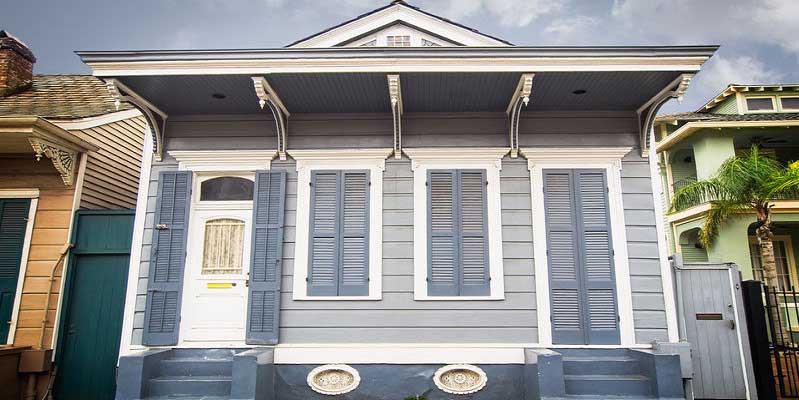Owning a historic home in one of New Orleans’ 18 districts means becoming familiar with government ordinances as well as neighborhood rules and real estate best practices.
New Orleans offers home buyers ample opportunities to purchase a piece of history, but the pride of owning a historic home comes along with a responsibility to care for it.
With the tricentennial of the founding of New Orleans in our rear view, awareness of the city’s rich architectural legacy continues to increase.
For context, the oldest buildings in New Orleans include:
- Jean Lafitte’s Blacksmith Shop, 941 Bourbon St., built in 1722
- Old Ursuline Convent, 1110 Chartres St., designed in 1745 and completed in 1752
- Louis Cathedral, 615 Pere Antoine Alley, built in 1789 on the site of a church built in 1718
- The Cabildo, 701 Chartres St., built in 1795
- Pitot House, 1440 Moss St., built in 1799.
A historic property can be yours to own, in one of New Orleans’ 18 local historic districts: Algiers Point, Bywater, Canal Street, Carrollton, Esplanade Ridge, Faubourg Marigny, Mid-City, Garden District, Holy Cross, Irish Channel, Lafayette Square, Lower Garden District, Parkview, Picayune Place, St. Charles Avenue, Treme, Uptown and Warehouse District.
Investment in a historic home requires careful study and planning, however, to ensure that you fulfill your responsibilities to the government, to your neighbors, and to history.
Your Responsibility to the Government
The community’s expectations for the preservation of historic properties and neighborhoods in New Orleans are expressed through regulations enforced by the city’s Historic District Landmarks Commission. The commission’s power varies according to whether the property is in a full-control or partial-control historic district, and can include oversight of renovations, new construction, and changes to a property’s exterior that are visible to the public.
The commission now offers free pre-sale inspections for sellers, buyers, and real estate agents to ensure that all parties involved in a transaction know about the property’s compliance, or lack of compliance, with historic district regulations.
Violations follow the property, not the property owner. The owner of a property with HDLC violations is responsible for them, even if he or she did not perform the work or was not aware of the violations at the time of purchase.
Your Responsibility to Your Neighbors
Maintaining good relationships with your neighbors can pay rich dividends, but does require investment on your part. Caring for a historic home can involve unexpected costs for unusual materials that may be more complicated to install, or for dealing with obsolete materials such as lead paint and asbestos. Homeowners’ budgets may also be pinched by higher insurance premiums.
Your neighbors may also expect you to decorate your home a certain way for the holidays, maintain a certain style of landscaping, or participate in community showcases of historic homes.
Your Responsibility to History
Historic homeowners should take care so that future generations will be able to appreciate the legacy as well. This will require attention to problems that might not be on the radar of neighbors or government inspectors, such as termites, root damage to foundations or driveways, or doors and windows that won’t open or shut. Small problems can readily become big problems, especially if they involve water, which is a constant issue on the swampy turf of South Louisiana. Lush landscaping close to the home can trap pockets of moisture and cause other exterior damage.
New Orleans has an active historic preservation community, with a wealth of resources for the owners of historic homes. Navigating the official regulations and unofficial expectations can be difficult, but contacting an experienced real estate expert can help you make the most of your own historic opportunity.
